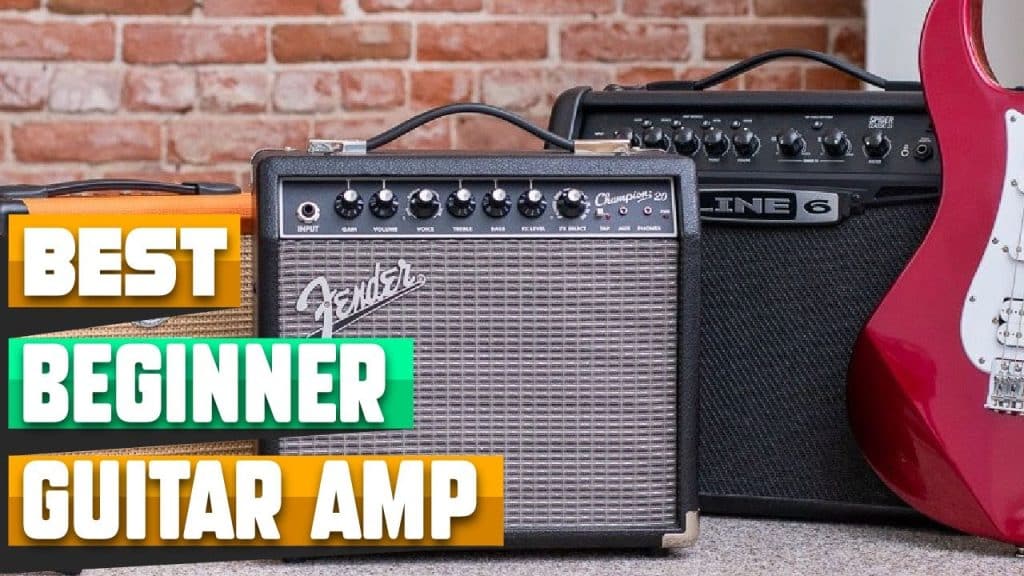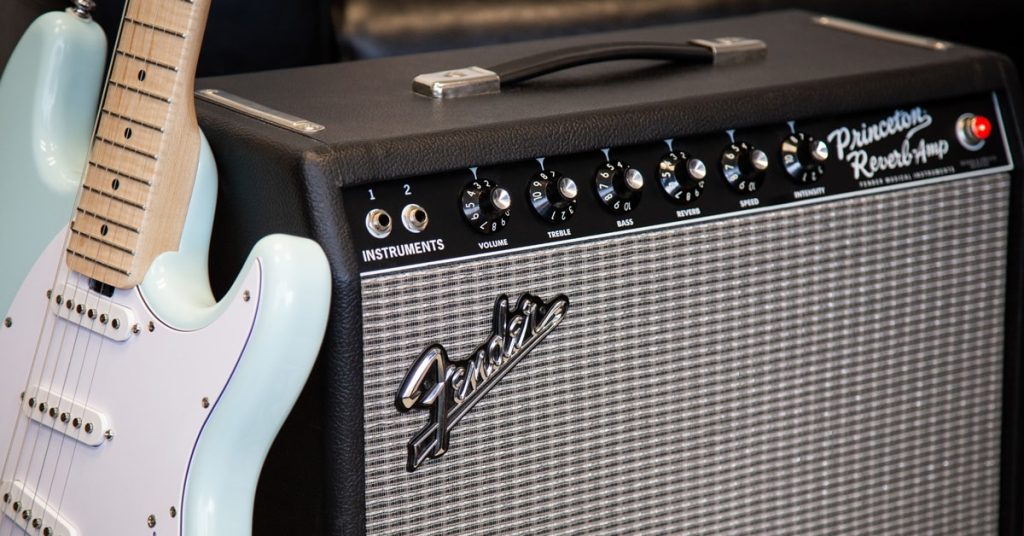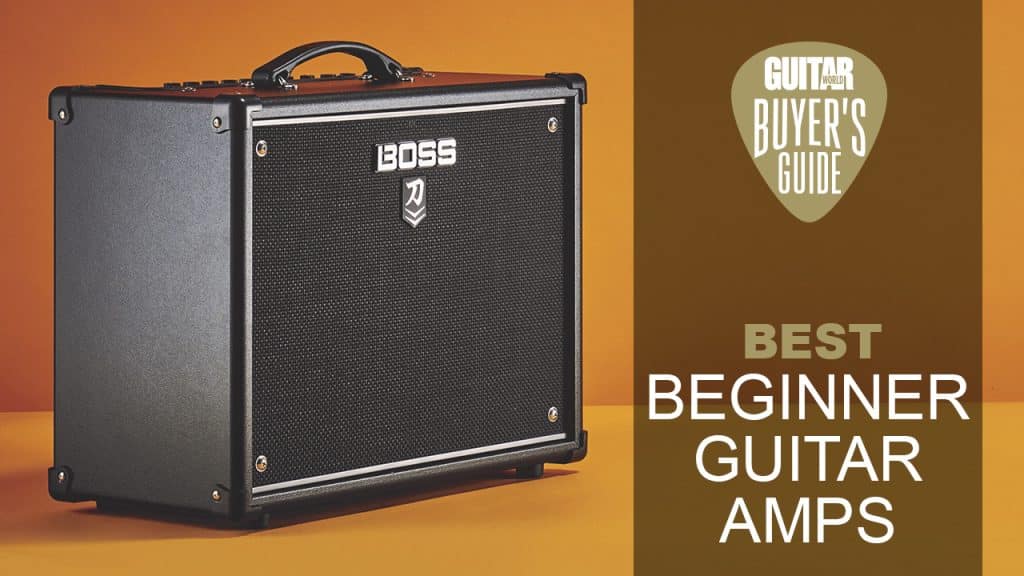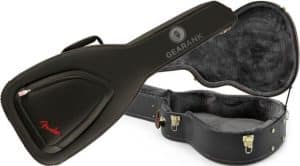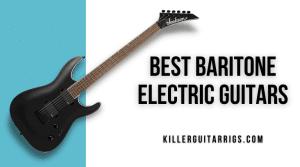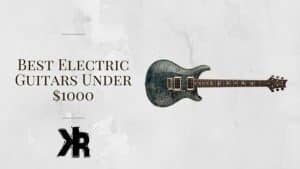Are you a beginner in the world of electric guitars? Are you ready to amplify your sound and take your playing to the next level? Look no further, because this ultimate guide is here to help you choose the best electric guitar amp for beginners. Whether you’re looking for a compact practice amp for your bedroom or a versatile combo amp for gigs, this guide will walk you through the different types of amps, their features, and what to consider before making your purchase. Get ready to rock out with the perfect amp that suits your needs and takes your guitar playing to new heights.
Understanding the Basics of Electric Guitar Amps
What is an electric guitar amp?
An electric guitar amp, short for amplifier, is a device that amplifies the sound produced by an electric guitar. It takes the guitar’s signal and increases its volume, tone, and overall presence by using electronic circuitry. Amps are a crucial component of a guitarist’s setup as they can significantly enhance the instrument’s sound and allow for greater control over tone and effects.
Why is choosing the right amp important for beginners?
Choosing the right amp is essential for beginners because it forms the foundation of their tone and overall playing experience. A good amp can inspire and motivate a beginner to practice and experiment, while a poor-quality amp can hinder progress and dampen enthusiasm. It’s important to consider factors such as sound quality, versatility, and durability when selecting an amp to ensure a positive learning experience.
Different types of electric guitar amps
There are various types of electric guitar amps available in the market, each with its own distinct characteristics and sonic qualities. The main types include solid-state amplifiers, tube amplifiers, modeling amplifiers, and hybrid amplifiers. Understanding the differences between these types can help beginners make an informed decision based on their needs, preferences, and budget.
Common features to consider
When choosing an electric guitar amp, several common features should be taken into account. These include built-in effects and tone controls, the number of channels and channel switching capabilities, multiple inputs and output options, built-in tuners and metronomes, as well as auxiliary connectivity for external devices. Beginners should carefully evaluate these features to ensure their amp meets their specific requirements and offers room for growth as they progress in their musical journey.
Determining Your Budget
Setting a realistic budget
Before starting your search for an electric guitar amp, it’s crucial to set a realistic budget. Amp prices can vary significantly, ranging from affordable options suitable for beginners to high-end professional-grade amplifiers. By determining your budget upfront, you can narrow down your choices and focus on the amps that fall within your price range, ensuring you find the best value for your money.
Finding the best value for money
Finding the best value for money involves considering the quality, features, and overall performance of an amp in relation to its price. It’s important to strike a balance between affordability and the desired sonic characteristics. Reading reviews, comparing different models, and seeking recommendations can be helpful in identifying amps that offer excellent value and are well-suited for beginners.
Considerations for long-term investment
While it’s wise to be mindful of your current budget, it’s also essential to consider your long-term investment when purchasing an electric guitar amp. As a beginner, you may outgrow your initial amp as you progress and develop your skills. Investing in an amp that allows for future growth and can accommodate your changing needs will save you from having to upgrade too soon. Look for amps with adjustable features and room for experimentation to ensure a more durable and versatile investment.
Identifying Your Music Genre and Playing Style
How your genre influences amp choice
The music genre you primarily play can heavily influence your amp choice. Different genres have distinct tonal characteristics and sonic requirements. For example, if you primarily play blues or classic rock, you might prefer an amp with warm tube-driven tones. On the other hand, if you play metal or high-gain styles, a solid-state or modeling amp might offer the aggressive and precise tones you seek. Understanding the sonic palette of your preferred genre will guide you in selecting an amp that best complements your style.
Matching the amp to your playing style
In addition to considering your genre, it’s essential to match the amp to your playing style. The way you play, the dynamics you employ, and the effects you use can all influence the type of amp that suits you best. For example, if you are a highly expressive lead guitarist, you might benefit from an amp with responsive touch sensitivity and excellent sustain. Alternatively, if you mainly play rhythm guitar, an amp that emphasizes tight low-end and punchy midrange might be more suitable. Understanding your playing style will enable you to find an amp that enhances your unique approach to the instrument.
Versatility options for multiple genres
If you enjoy playing a variety of genres or are unsure of your specific musical direction, it’s worth considering an amp with versatility options. Some amps offer multiple channels, switchable voicings, or built-in effects that allow you to explore different genres and tones. Having a versatile amp can provide a broader range of sonic possibilities and accommodate your evolving musical tastes.
Analyzing Power and Size
Understanding wattage and power requirements
The wattage of an electric guitar amp refers to its power output. Higher wattage generally means more volume and headroom for clean tones, while lower wattage can deliver desirable overdriven or distorted sounds at lower volumes. It’s essential to consider your power requirements based on your playing environment and intended use. For home practice, lower wattage amps may suffice, while larger venues or bands may necessitate higher wattage amps to cut through the mix.
Balancing power and portability
When choosing an electric guitar amp, it’s crucial to strike a balance between power and portability. Higher wattage amps tend to be larger and heavier, making them less suitable for musicians who frequently travel or have limited space. Portable amps with lower wattage can be more convenient for practice sessions, smaller gigs, or rehearsals with limited stage space. Consider your transportation needs and the practicality of the amp’s size and weight to ensure it suits your lifestyle.
Size considerations for practice and performance situations
The size of the amp also plays a role in its suitability for different practice and performance situations. A smaller amp can be ideal for practicing at home or in a bedroom setting, providing enough volume for personal enjoyment without disturbing others. On the other hand, larger amps may be necessary if you’re performing in larger venues or with a band where more volume is required to be heard over drums and other amplified instruments. Evaluating the size requirements for your specific playing situations will help you choose an amp that can meet your needs effectively.
Exploring Different Amplifier Types
Solid-State Amplifiers
Solid-state amplifiers use transistors or integrated circuits to amplify the guitar’s signal. They often offer reliability, affordability, and a broad range of tonal options. Solid-state amps are known for their clean and crisp tones, making them suitable for genres such as jazz, country, and pop. These amps are also generally more lightweight and require less maintenance compared to other types.
Tube Amplifiers
Tube amplifiers, also known as valve amps, use vacuum tubes to amplify the guitar’s signal. They are highly regarded for their warmth, responsiveness, and natural overdriven tones. Tube amps are favored by blues, classic rock, and vintage enthusiasts due to their characteristic warmth and harmonic richness. However, they tend to be heavier, more expensive, and require regular tube replacement and maintenance.
Modeling Amplifiers
Modeling amplifiers utilize digital technology to emulate the sounds of various amps, effects, and speaker cabinets. They offer a wide range of presets and are designed to capture the nuances of classic and modern amps. Modeling amps are highly versatile, allowing beginners to experiment with different tones and effects without needing multiple separate pieces of gear. They are a popular choice for those seeking convenience, affordability, and a wide range of tones.
Hybrid Amplifiers
Hybrid amplifiers combine the qualities of both solid-state and tube amps, typically employing solid-state circuitry for the preamp section and a tube power amp section. This combination aims to provide the best of both worlds, offering some of the warmth and character of tube amps while retaining the reliability and affordability of solid-state technology. Hybrid amps are suitable for guitarists who desire tube-like tonal characteristics without the associated cost and maintenance.
Choosing the right type for your needs
When considering different amplifier types, it’s crucial to assess your needs, preferences, and budget. Each type has its unique sonic qualities and benefits, and the choice ultimately depends on your musical goals and personal tastes. It’s advisable to spend time trying out amps of different types to see which one resonates with your style and produces the desired tones.
Finding the Right Features
Built-in Effects and Tone Controls
Many electric guitar amps come equipped with built-in effects such as reverb, delay, chorus, and overdrive. These effects can enhance your playing experience and expand your sonic possibilities without requiring additional pedals or equipment. Additionally, having tone controls such as bass, middle, and treble knobs allows you to shape the overall sound to suit your preference and genre.
Channels and Channel Switching
Amp channels refer to separate signal paths that allow you to switch between different presets or settings. Having multiple channels can provide versatility, enabling you to instantly switch between clean and distorted tones or different amp voicings. Channel switching can be a valuable feature for live performances or recording sessions, allowing you to access a range of tones without the need for additional equipment.
Multiple Inputs and Output Options
Consider an amp that offers multiple input options, such as a dedicated input for active or passive pickups, or even an auxiliary input for connecting external devices like smartphones or MP3 players. This allows you to play along with backing tracks or practice with your favorite songs. Additionally, having multiple output options, such as a headphone jack or a line out, can be useful for practicing silently or connecting to a recording interface or PA system.
Built-in Tuners and Metronomes
Having a built-in tuner can save you the hassle of purchasing a separate tuner and allow for convenient on-the-go tuning. Similarly, a built-in metronome can help you develop a solid sense of timing and improve your rhythmic accuracy. These features are particularly beneficial for beginners as they promote good habits and assist in building a strong foundation in guitar playing.
Auxiliary Connectivity
Amp models with auxiliary connectivity offer the ability to connect additional devices like pedals, multi-effects units, or external amps. This flexibility allows you to expand your sonic options and integrate other gear seamlessly, making your amp a central hub for your entire rig. If you plan to explore different pedals or utilize a multi-effects unit, consider an amp with appropriate auxiliary connectivity options.
Discussing the importance of features for beginners
For beginners, having built-in effects and tone controls can be highly beneficial. These features provide immediate access to a variety of tones and allow beginners to experiment and discover their preferred sound. Additionally, features like multiple inputs and headphone jacks facilitate silent practice and allow beginners to jam along with their favorite songs. While it’s important not to rely solely on features, having a few essential ones can significantly enhance the learning process.
Considering the Amp’s Portability
Weight and size considerations
Portability is an essential factor to consider when choosing an electric guitar amp, especially for beginners who may need to transport their amp frequently. Amps that are lightweight and compact are ideal for ease of transportation and setup. However, be cautious not to compromise on sound quality or the amp’s suitability for your needs solely for the sake of portability.
Built-in handles and transportability
Some amps come with built-in handles or carry straps, making them easier to transport. This feature can be advantageous for gigging musicians or those who move their amp between practice spaces. Built-in handles provide a secure grip and reduce the risk of accidental drops or damage during transportation.
Battery-powered or AC-powered options
Consider whether you need an electric guitar amp that can be powered by batteries or solely by AC power. Battery-powered amps offer the advantage of portability and the ability to play in locations without easy access to electrical outlets. AC-powered amps, on the other hand, provide consistent power and eliminate the need to monitor battery levels or carry spare batteries. Determine which power option suits your playing situation and choose accordingly.
Reading Reviews and Seeking Expert Opinions
Exploring online reviews and ratings
In today’s digital age, it’s easy to find online reviews and ratings for electric guitar amps. Websites and forums dedicated to musical instruments often provide valuable insights from fellow guitarists who have firsthand experience with different amps. Reading reviews and comparing ratings can help you gauge the overall quality, reliability, and user satisfaction of various amp models.
Reaching out to guitar communities for recommendations
Online guitar communities and forums are a treasure trove of knowledge and collective wisdom. Engaging with fellow guitarists in these communities can provide you with valuable recommendations and insights based on their experiences. Share your specific requirements, musical goals, and budget constraints to receive tailored recommendations from guitarists who have faced similar decisions.
Consulting with music store experts
When in doubt, don’t hesitate to consult with experts at your local music store. The staff at these stores typically have extensive knowledge of different amp models, features, and brands. They can guide you through the selection process, offer personalized advice, and allow you to try out different amps firsthand. Take advantage of their expertise and rely on their recommendations to make a well-informed decision.
Trying Out Amps Before Making a Purchase
Visiting local music stores
To truly gauge the suitability of an amp for your needs, it’s essential to visit local music stores and try out different models. Spend time playing your own guitar through various amps to assess the tone, responsiveness, and overall feel. Experiment with different settings, play at different volumes, and test out any built-in effects or features. Taking the time to physically try out amps will provide you with the most accurate representation of their sonic qualities and help you make an informed decision.
Attending guitar expos and conventions
Guitar expos and conventions offer a unique opportunity to try out a wide variety of amps from different brands in a single location. These events often feature demonstrations, workshops, and performances where you can experience amps in a live setting. Attending such events can be an enjoyable and educational experience, allowing you to discover new brands, models, and features that you may not have otherwise encountered.
Taking advantage of trial periods or return policies
If purchasing an amp online, it’s advisable to check the seller’s return policy and warranty before making a final decision. Some sellers offer trial periods that allow you to test the amp in your own environment for a specified period. This gives you the opportunity to determine if the amp meets your expectations and needs. By taking advantage of trial periods or return policies, you can confidently make a purchase knowing that you can make changes if necessary.
Finalizing Your Decision and Making the Purchase
Comparing different brands and models
Once you have narrowed down your options, compare different brands and models that meet your requirements. Consider factors such as reliability, reputation, customer reviews, and long-term value. Brands with a strong track record in the industry and positive customer feedback often indicate a safe investment. Pay attention to the specific features, tonal characteristics, and build quality of each model to ensure it aligns with your preferences.
Weighing the pros and cons
Take some time to carefully assess the pros and cons of each amp you are considering. Consider the strengths and weaknesses of each model in relation to your playing style, genre preferences, budget, and future goals. Make a list of the key factors that are important to you and evaluate each amp against those criteria. Comparing the pros and cons will help you make an objective decision based on your specific needs and priorities.
Considering long-term satisfaction
When making a significant investment in an electric guitar amp, it’s essential to think about long-term satisfaction. Consider how the amp will serve your needs as you progress in your playing journey. Evaluate its potential for growth, adaptability to different musical styles, and whether it aligns with your expected progression. Considering long-term satisfaction ensures that the chosen amp will continue to meet your evolving needs and musical aspirations.
Understanding warranties and after-sales support
Before finalizing your decision, familiarize yourself with the warranty and after-sales support provided by the manufacturer or seller. A comprehensive warranty can provide peace of mind and protect your investment against any unforeseen issues. Additionally, knowing that there is adequate after-sales support, such as easy access to technical assistance or repairs, can be an important factor in ensuring a satisfactory ownership experience.
In conclusion, choosing the best electric guitar amp for beginners requires careful consideration of various factors. From understanding the basics of different amplifier types to analyzing power and size requirements, exploring features, and seeking expert opinions, it’s important to be thorough in your research and evaluation. By taking the time to understand your musical genre and playing style, as well as your budget and long-term goals, you can confidently select an amp that will inspire and support your musical journey. Remember to try out different amps before making a purchase, weigh the pros and cons, and ensure that the chosen amp provides the necessary features and warranties for a satisfying and enjoyable playing experience.


